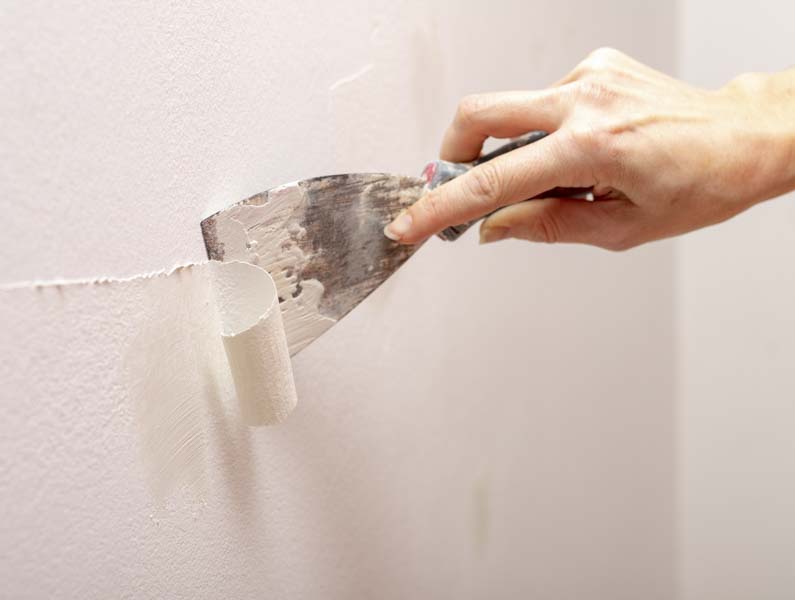Bacterial abstract, Yellowstone National Park / Rebecca Latson
How many of you out there appreciate abstract art? Even if you don’t like it, how many of you have photographed something abstract because it caught your eye while visiting a unit of the National Park System? While I’m not a huge fan of abstract art, my eyes are nonetheless drawn to Nature’s abstracts framed within my national park compositions.
What is meant by abstract, or, in this case, abstract art? According to tate.org.uk, “Abstract art is art that does not attempt to represent an accurate depiction of a visual reality, but instead uses shapes, colors, forms and gestural marks [free-flowing strokes] to achieve its effect.”
I suppose this makes national park landscapes (and landscapes in general) both orderly and abstract. I even wrote an article for the Traveler about the geometry of a national park landscape. So now, here’s an article about the abstracts of Nature in a national park. Everything you see here is familiar – you can identify sand ripples and tree limbs, for example – yet these recognizable items are photographed in such a manner as to focus on those “shapes, colors, forms, and gestural marks.”
Abstracts in nature are easily seen at Yellowstone National Park in Wyoming, such as the bright orange microbial mat in the photo at the top of this article, thriving beneath the warm water runoff of a hot spring at Biscuit Basin. To look at it, you would probably not immediately know what this image represents (unless, of course, you’ve visited Yellowstone). But the image certainly has elements of abstract art, don’t you think?
Bacterial mats are not the only natural abstracts you’ll see at Yellowstone. How many of you have driven the road from Tower Junction toward Dunraven Pass? There’s a large pullout with a view toward the Washburn Range. About midway between the mountains and where you are parked is a thick strip of short, bright green conifers from which shoot up the tall, spindly, ramrod-straight trunks of lodgepole pines (well, I think they are lodgepoles, since 80 percent of the park is covered with lodgepole forests). If you zoom in on this strip of forest, you’ll get an interesting abstract consisting solely of mottled brown and white, thin tree trunks surrounded by feathery-looking green from the shorter trees.

Tree abstracts, Yellowstone National Park / Rebecca Latson
Hike up a dune within the 30-square-mile dunefield of Great Sand Dunes National Park and Preserve in Colorado and you’ll see abstracts in the velvety sand, such as beige and black ripples in addition to other odd patterning created by wind and water.
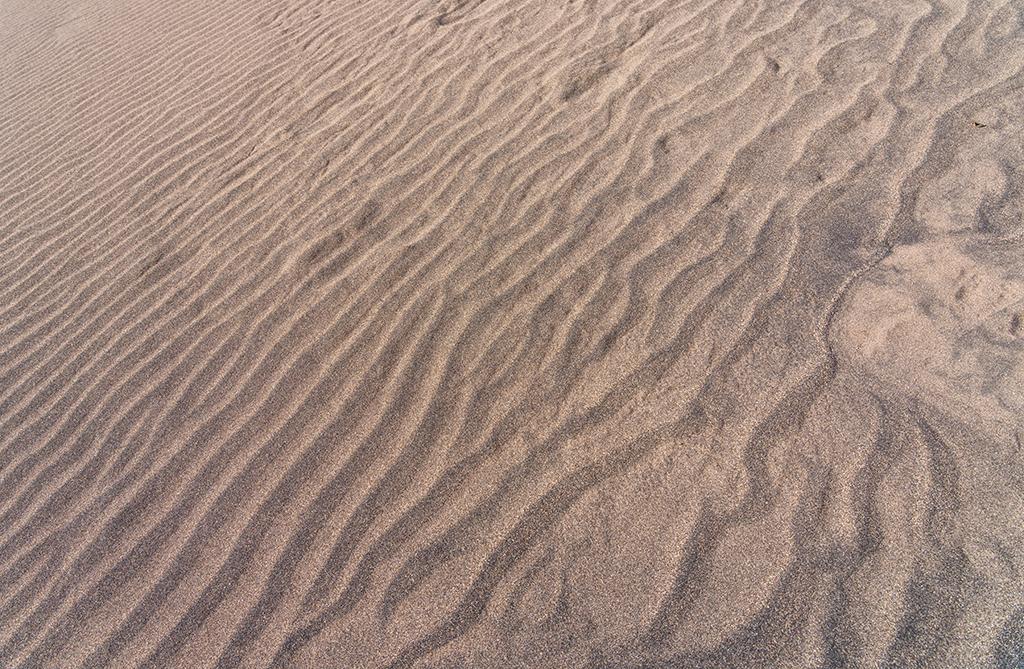
Ripples in a sand dune, Great Sand Dunes National Park and Preserve / Rebecca Latson
Even the moss-coated branches of a tree within the Hoh Rainforest of Olympic National Park in Washington state exhibit abstractions. And yet, they are recognizable features, aren’t they? You look at this composition and you know those are mossy tree branches.

Moss-covered branch abstract, Olympic National Park / Rebecca Latson
In what ways can you, the photographer, capture those abstracts in Nature?
Use your telephoto lens and zoom in on abstract patterning. I know, a “pattern” is more or less orderly and perhaps an oxymoron to the concept “abstract pattern.” Nonetheless, in the telephotodune image above, the ripples create a pattern yet are also abstract.
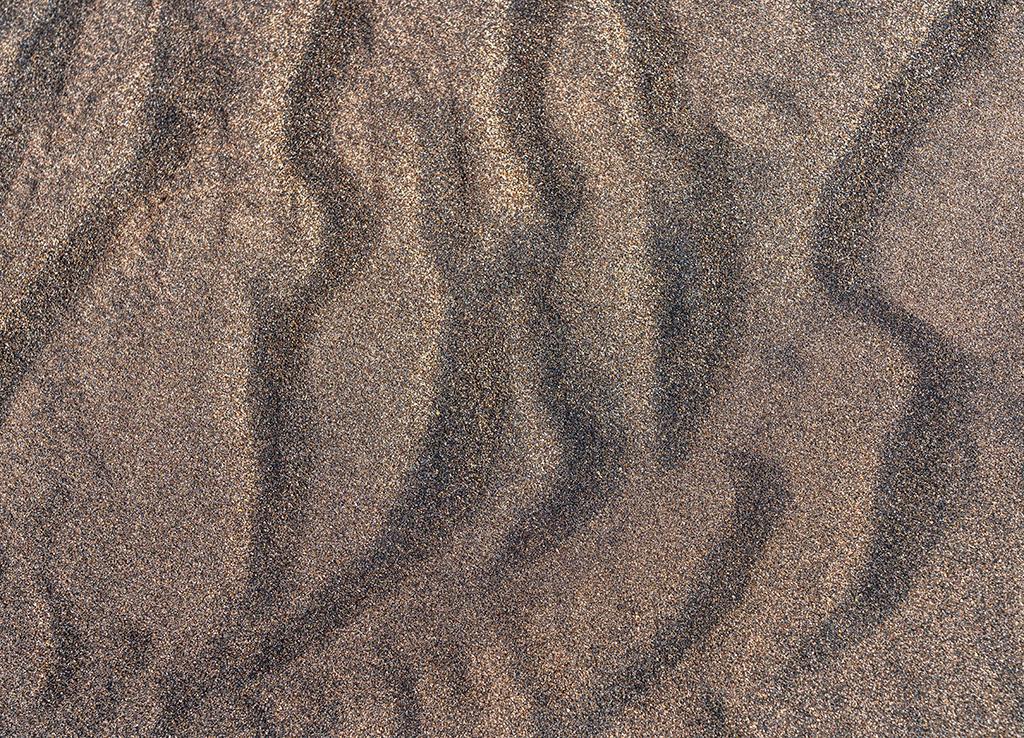
A telelphoto view of ripples in the sand, Great Sand Dunes National Park and Preserve / Rebecca Latson
The definition of “abstract colors” is readily seen in this telephoto close-up of the many-hued mineral colors of a petrified log at Petrified Forest National Park in Arizona.

A colorful abstract (cropped) close-up of mineral colors in petrified wood, Petrified Forest National Park / Rebecca Latson
While editing a wide-angle landscape, why not make a copy of the original and crop that portion of landscape for a more focused view of the abstract portion of the composition (and ignore those people who say you should get a closer image in-camera in the first place so as not to lose data when you crop the shot. Sometimes ya gotta crop after the fact).
On occasion, while photographing some natural abstract, try to include an object representing scale and/or reference. In the image below, I photographed a winter image of the shallow terraced water of Grand Prismatic Spring at Yellowstone’s Midway Basin because these terraces reminded me of a river network. You can see the mountains and forest in the background, presenting a little reference to this image.

Grand Prismatic terrace abstract, Yellowstone National Park / Rebecca Latson
Here’s another veined bacterial mat abstract photographed at Yellowstone’s Fountain Paint Pots. The silica-coated tree limb pieces just happened to be lying upon that mat, yet they are a small bit of scale and reference regarding the entire composition’s size.

Bacterial veins at Fountain Paint Pots, Yellowstone National Park / Rebecca Latson
Star trails are great abstracts created during your night photography sessions, like the one pictured here captured at Capitol Reef National Park in Utah. I don’t create them because they give me vertigo (seriously), but if you wish to generate a star trail, all you need to do is use a shutter speed longer than 30 seconds using the “bulb” setting in your camera. As you dial for the desired shutter speed, “bulb” will appear once you’ve moved the shutter speed dial past 30 seconds. Hold down on that remote button for as many seconds as you wish before releasing.
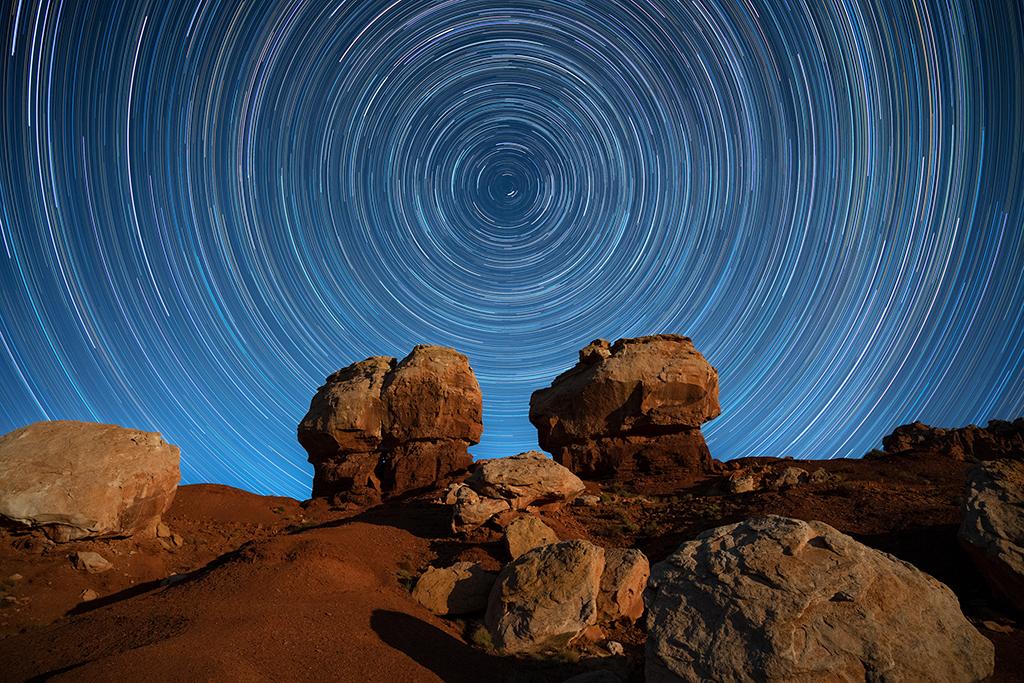
Star trails and red rock landscape, Capitol Reef National Park / NPS – Phil Sisto
Thus far, I’ve described abstracts occurring in nature, which are different from the abstracts one can create with artistic filters or even your own lens.
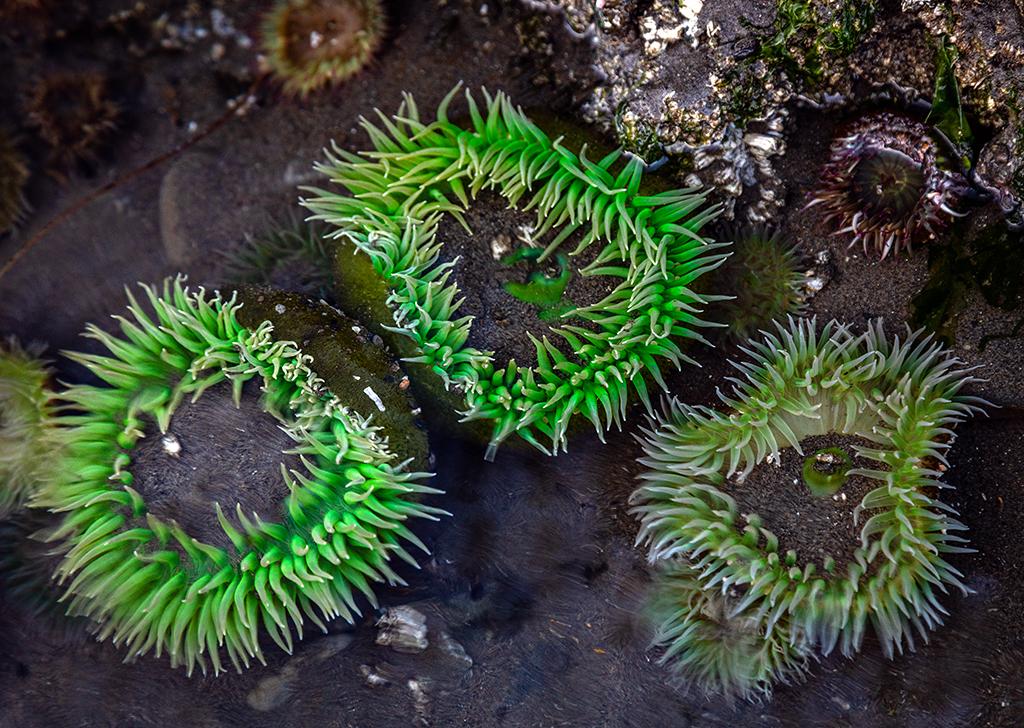
Green sea anemones in a tide pool at Ruby Beach, Olympic National Park / Rebecca Latson
In the image above, you see a close-up of green sea anemones photographed in a tide pool at Ruby Beach in Olympic National Park. The image below is a “liquified” version of those green sea anemones using the Liquify Filter in Adobe Photoshop. You may or may not like this kind of thing, but remember, photography is a subjective art and some photographers may find the ability to do this a nice creative outlet.
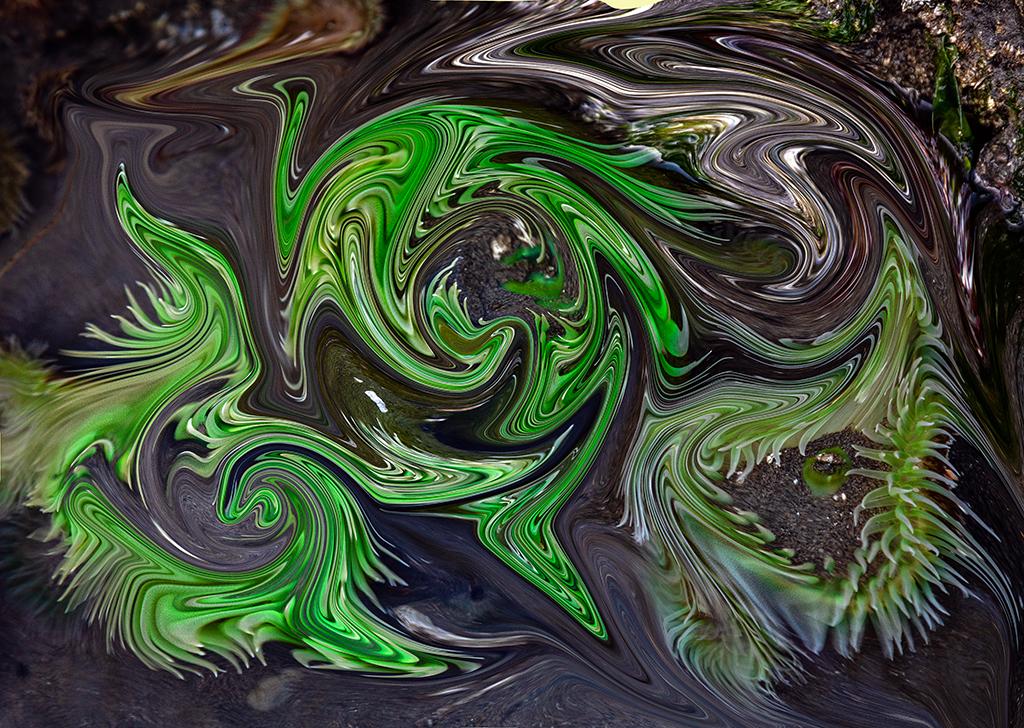
The “liquified” version of green sea anemones, Olympic National Park / Rebecca Latson
You can also create an abstract in-camera using a technique by moving the camera and lens up and down or sideways. If you want to try something like this after the fact, some photo editing software (like Adobe Photoshop) have a motion blur setting to create a similar effect.

Green and brown lens movement blur abstract, Yellowstone National Park / Rebecca Latson
If you have a zoom lens, another type of in-camera abstract is to use a slow shutter speed and move the zoom in or out during that slow count. This is another technique that may be created after the fact using photo editing software.
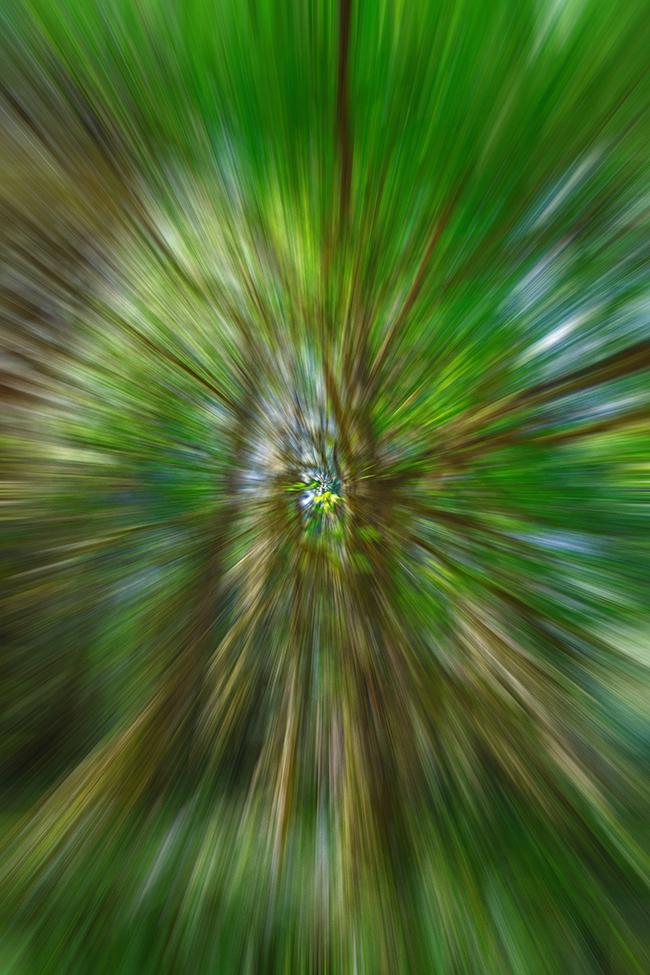
Green and brown lens movement blur abstract, Yellowstone National Park / Rebecca Latson
As I review what I consider abstract images I’ve captured over the years in various units of the National Park System, I realize abstract concepts apparently capture my attention more than I ever realized. Maybe this is the same for you?


